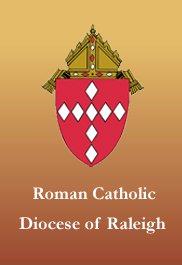“They’re Going to Do It Anyway”
Abortion Myth: By outlawing abortion, women will be in danger as they seek out dangerous back-alley abortions. 5,000 to 10,000 women every year died as a result of illegal abortions before Roe vs Wade.
No one is forced to break the law—people choose to break the law. The laws against theft do not force people to seek out alternative, more dangerous ways to steal. The laws simply forbid a certain immorality. Any decisions on the part of the thief are his own responsibility. In addition, the government isn’t responsible for protecting its citizens from the negative consequences that would result from breaking the law. Mary Anne Warren, a pro-abortion polemicist agrees with this outlook:
The fact that restricting access to abortion has tragic side effects does not, in itself, show that the restrictions are unjustified, since murder is wrong regardless of the consequences of prohibiting it. (Warren, Mary Anne. “On the Moral and Legal Status of Abortion.” The Problem of Abortion, 2nd ed., ed. Joel Feinberg [Belmont, CA: Wadsworth, 1984], pg. 103.)
Our government doesn’t insist that stealing cars should be made effortless so as to protect the life and health of a carjacker. No one should break the law — that’s why we call it “the law.” Though it’s certainly true that if abortion were made illegal, some women would risk their own death in order to bring about the death of their child, but there’s another unspoken alternative: these women shouldn’t have abortions. If pregnancy is so anathema to them, they should remain chaste.
Further, the above abortionist myth is founded on a series of lies that have long since been covered. The idea that 5,000 to 10,000 women would die as a result of women seeking illegal abortions is a myth. The deaths of so many women of childbearing years would be easily noted on census and population tables of the time but such undeniable proof is remarkably and absolutely absent. It is a pro-abortionist lie. The numbers given are highly exaggerated. In 1960, Dr. Mary Calderone, former medical director for Planned Parenthood, wrote:
In 1957 there were only 260 deaths in the whole country attributed to abortions of any kind. In New York City in 1921 there were 144 abortion deaths, in 1951 there were only 15; and, while the abortion death rate was going down so strikingly in that 30 year period, we know what happened to the population and the birth rate. (Calderone, Mary S. “Illegal Abortion as a Public Health Problem.” American Journal of Public Health, July 1960.)
The Allen Guttmacher Institute, an organization that cooperates heavily with Planned Parenthood, reported there were nearly 200 deaths from illegal abortions in 1965. This number diminished rapidly down to about 40 in January 1973 when the Supreme Court decided upon Roe vs. Wade. At that point, deaths from all abortions, legal and otherwise, dropped to below 20 per year (Allen Guttmacher Institute. Trends in Abortion in the United States, 1973–2008, New York: Guttmacher Institute. 2011). The Centers for Disease Control reports that 39 women died from illegal abortion per year before Roe vs. Wade and 24 from legal abortion in 1972, the year before the legalization of abortion in America. This is far from the 5,000 to 10,000 women dead illegal abortions as a result of claimed by abortion advocates.
The ultimate source of these lies is Dr. Bernard Nathanson, co-founder of NARAL (National Association for the Repeal of Abortion Laws). In his misery and sorrow for his sins, Dr. Nathanson abandoned that organization and became a pro-life advocate. He admitted that he and his organization frequently lied as to the number of deaths in order to gain sympathy and support for legalized abortion. He wrote:
How many deaths were we talking about when abortion was illegal? In N.A.R.A.L. we generally emphasized the drama of the individual case, not the mass statistics, but when we spoke of the latter it was always “5,000 to 10,000 deaths a year.’ I confess that I knew the figures were totally false and I suppose the others did too if they stopped to think of it. But in the ‘morality’ of the revolution, it was a useful figure, widely accepted, so why go out of our way to correct it with honest statistics. The overriding concern was to get the laws eliminated and anything within reason which had to be done was permissible.
If someone were being mugged, could a bystander or nearby police officer legitimately, ethically, intelligently say, “Well, she’s going to get mugged one way or another whether I help her or not?” Why would it be acceptable to apply such poor pseudologic to any other situation?
“Well, the kid’s going to commit suicide one way or another whether I help her or not.”
“Well, the hacker’s going to shut down the national grid one way or another whether I help her or not.”
“Well, the teenager is going to use heroin one way or another whether I help her or not.”
As you see, this misology doesn’t work in any case. It’s the sociopath’s contempt for the suffering of others that prompts this statement. And one should never pay attention to what sociopaths say when discussing morality. After all, sociopaths are selfishly going to seek their own goals rather than the common good, one way or another, whether I help them or not.
In Canto III of his Divine Comedy, Dante Alighieri describes the “portico” to hell as a vast field with countless people ― more people than Dante had ever imagined were ever alive at any time. They are wailing and crying as they run after floating banners all the while being stung by hornets and wasps. Virgil explains to him that these are the souls of humans and angels who were uncommitted ― those who just didn’t care. They were neither good enough for heaven nor bad enough for hell. This was the place for the fallen people who had lost the good of intellect. These people shrugged their shoulders both at evil and at good. They had the option of helping others in need but refused to do anything about it.
We are all required as moral agents to help those who can’t help themselves ― in this case, the pre-born.



